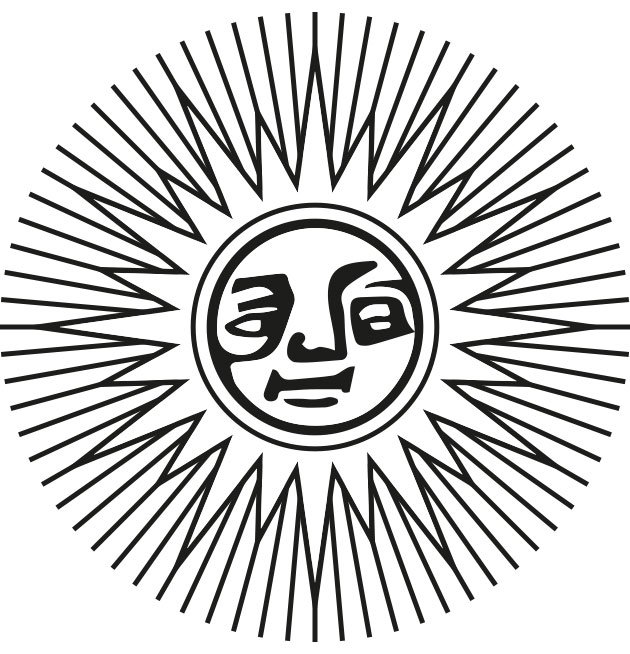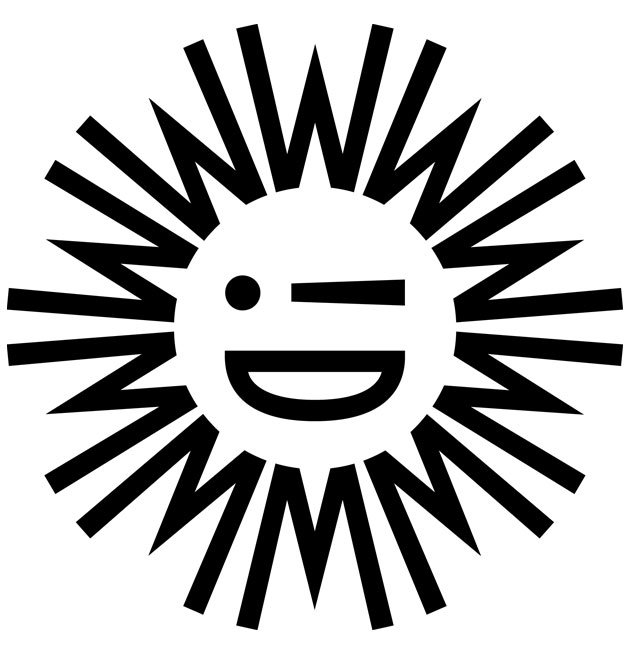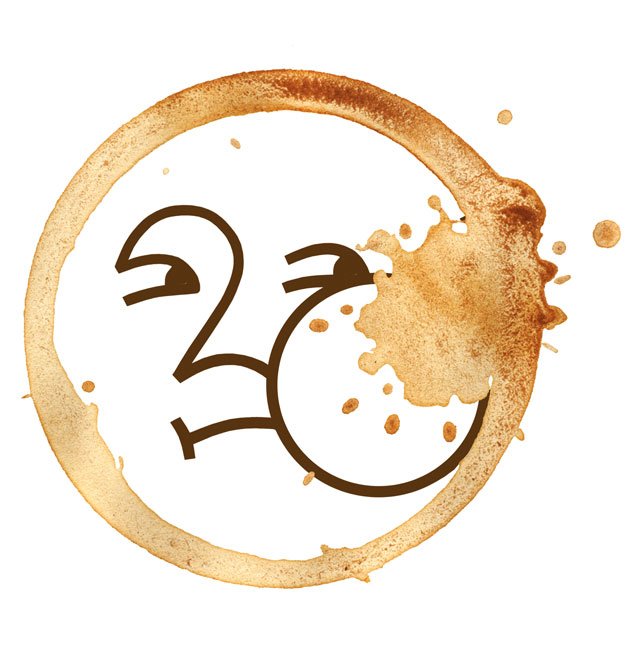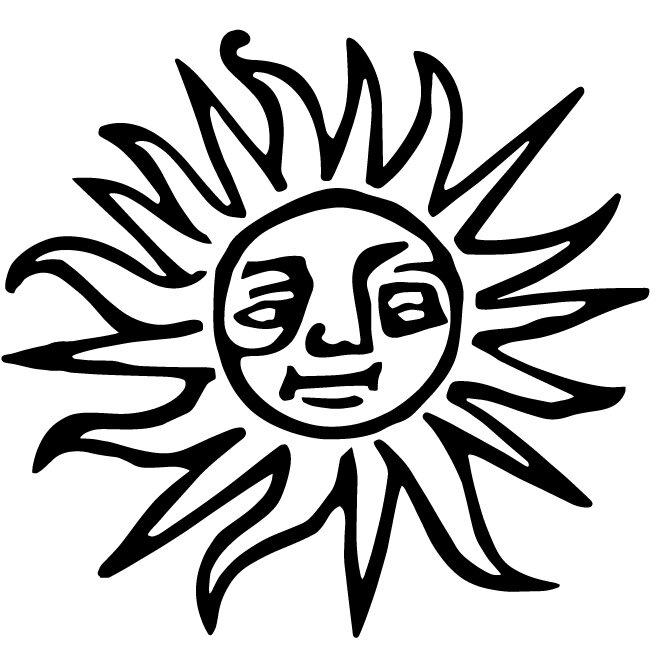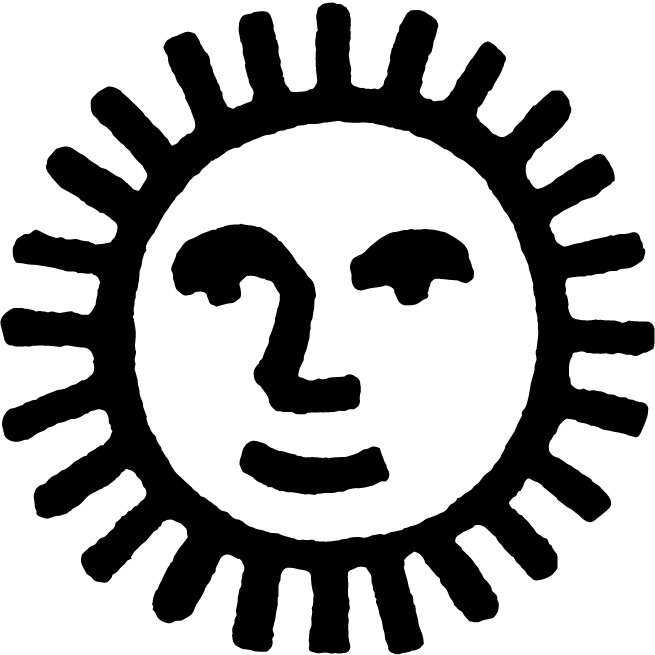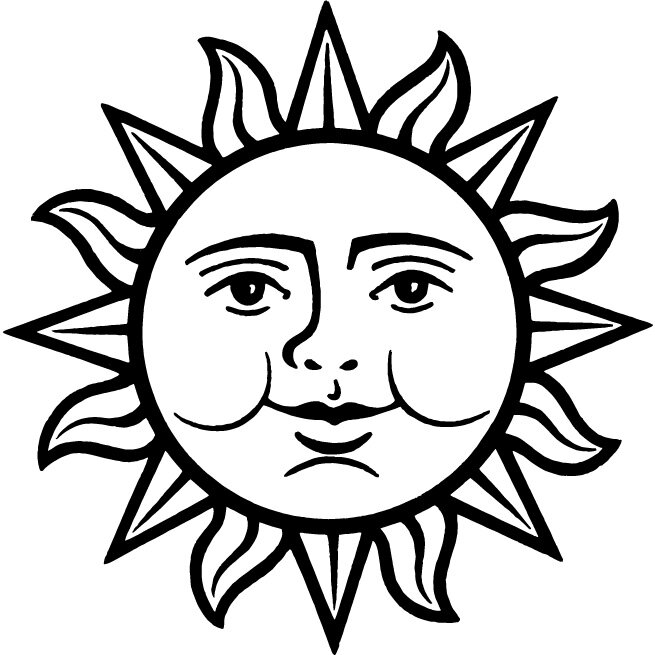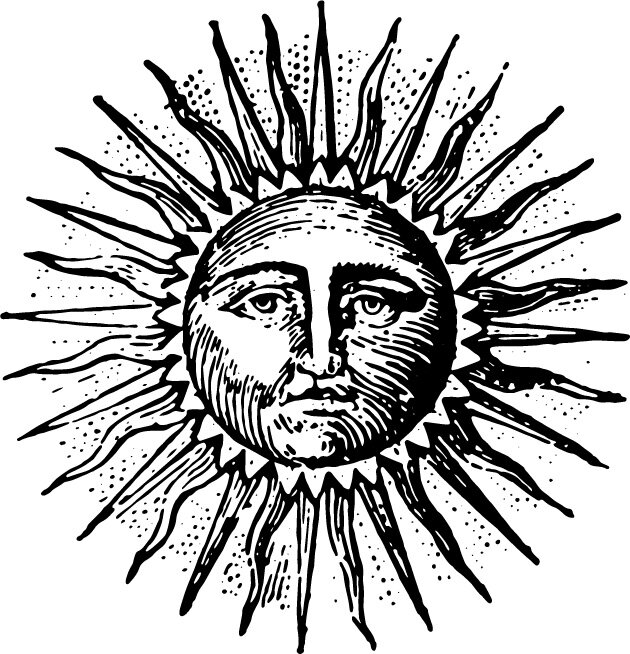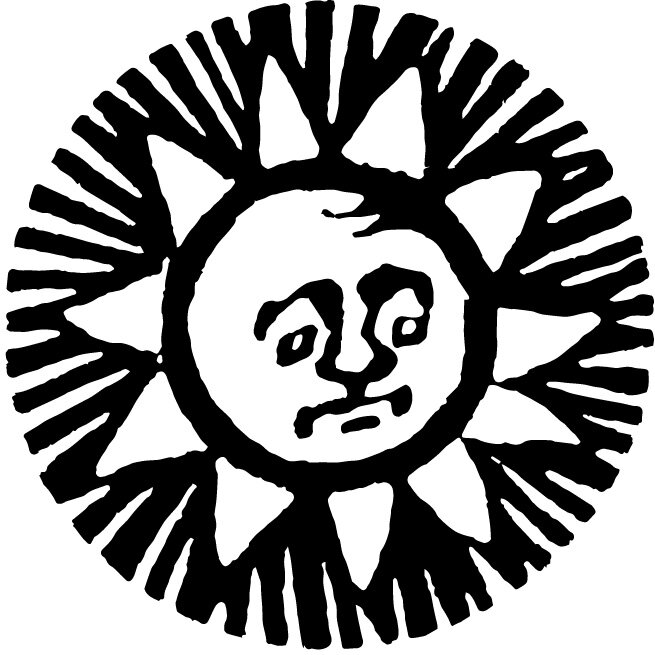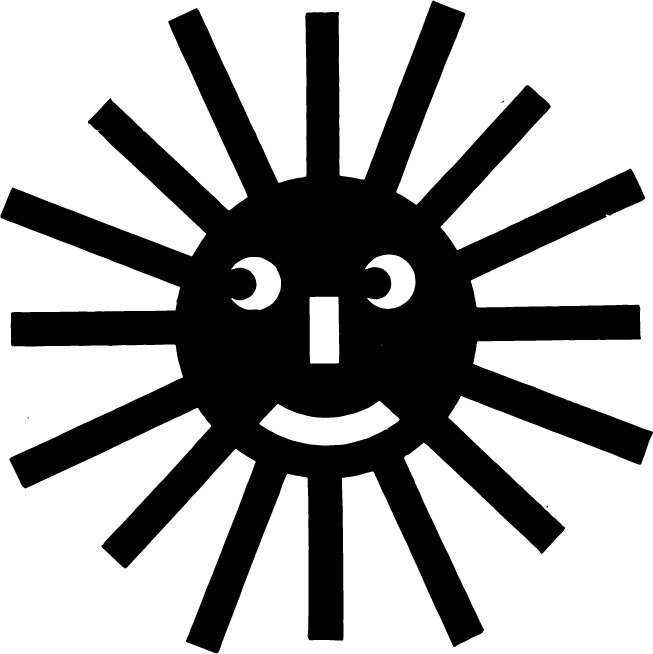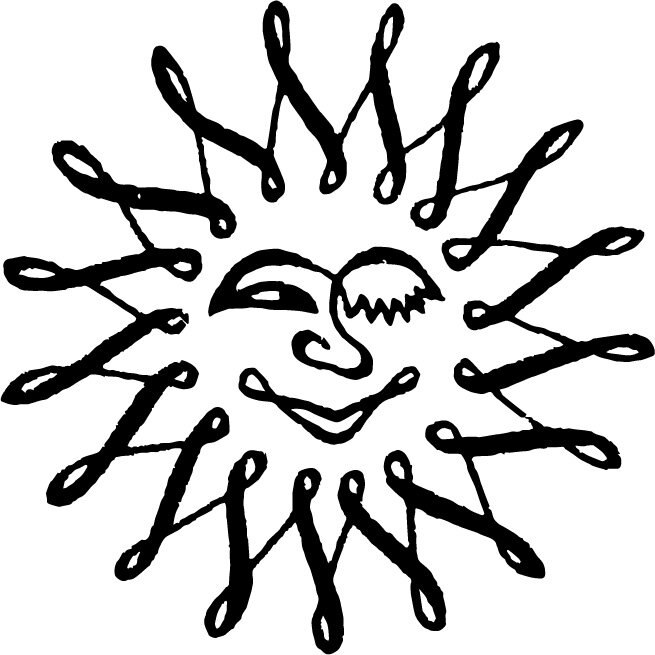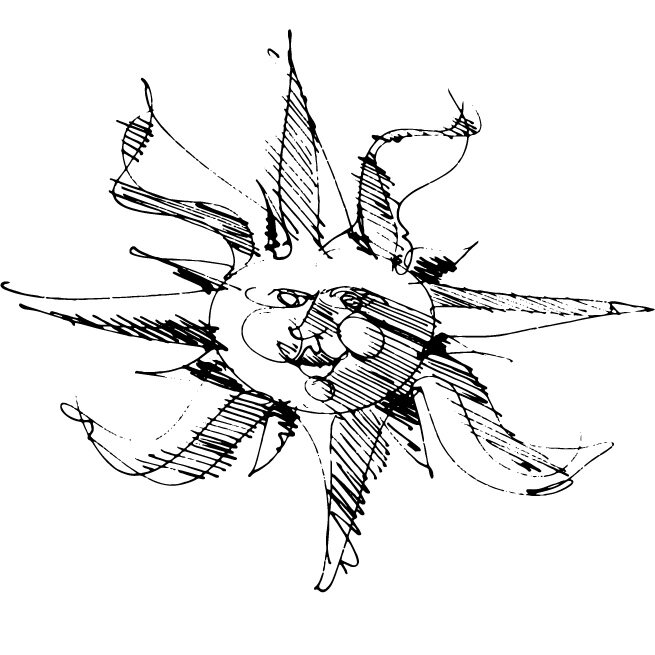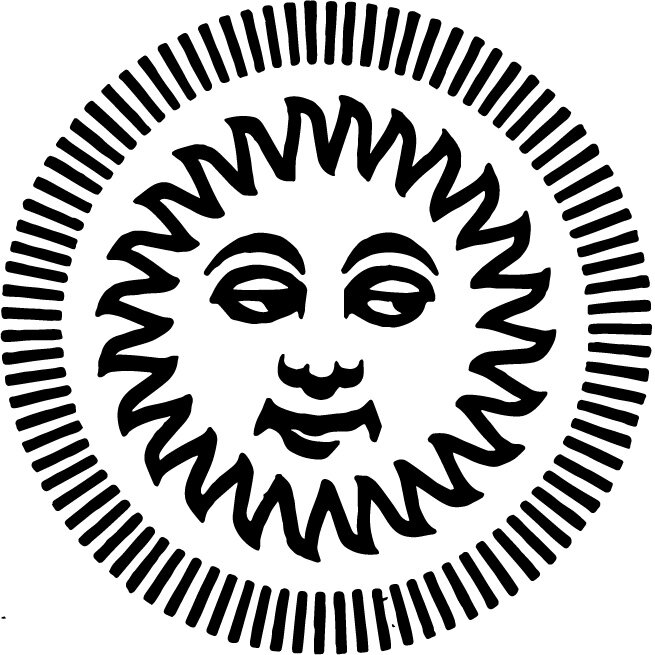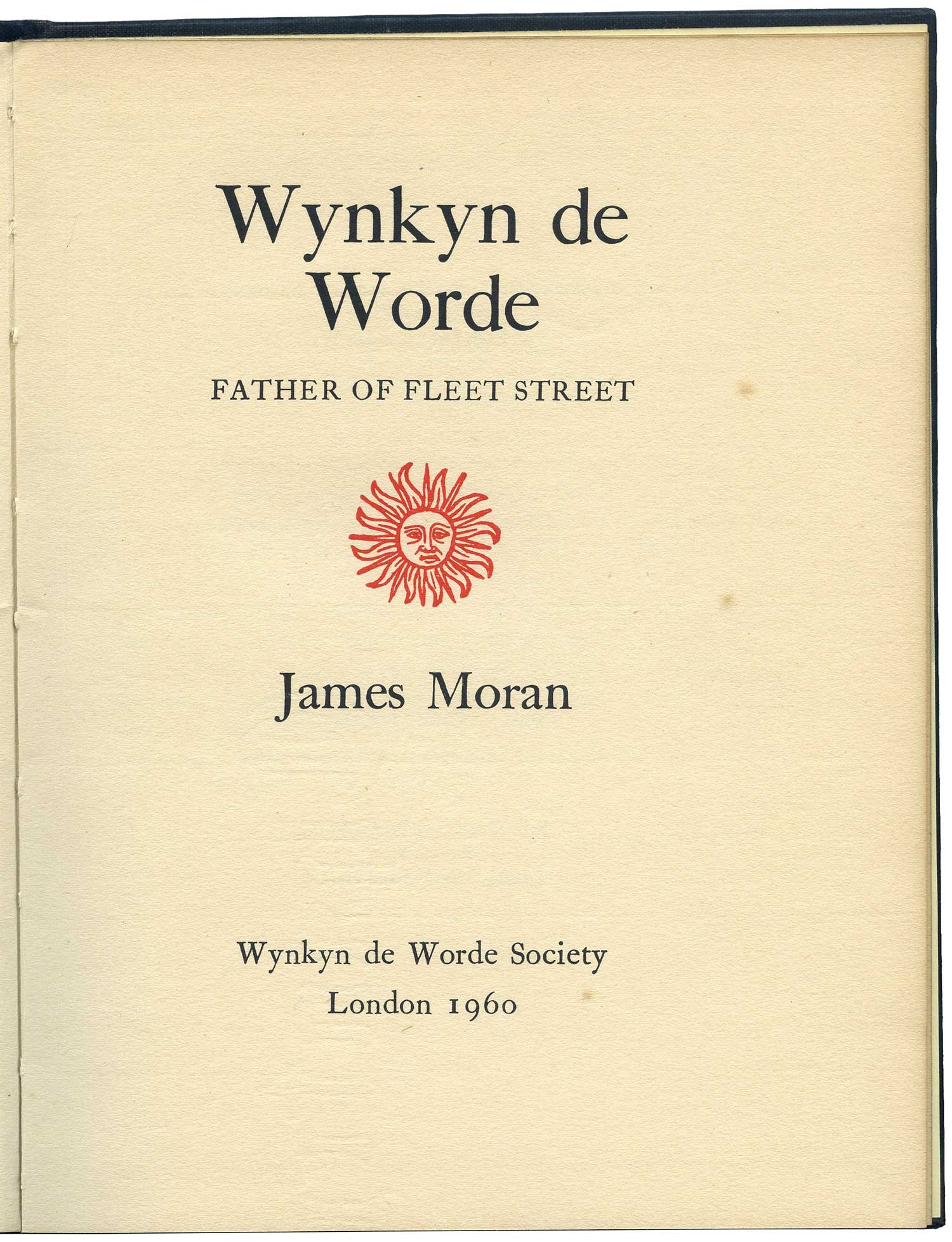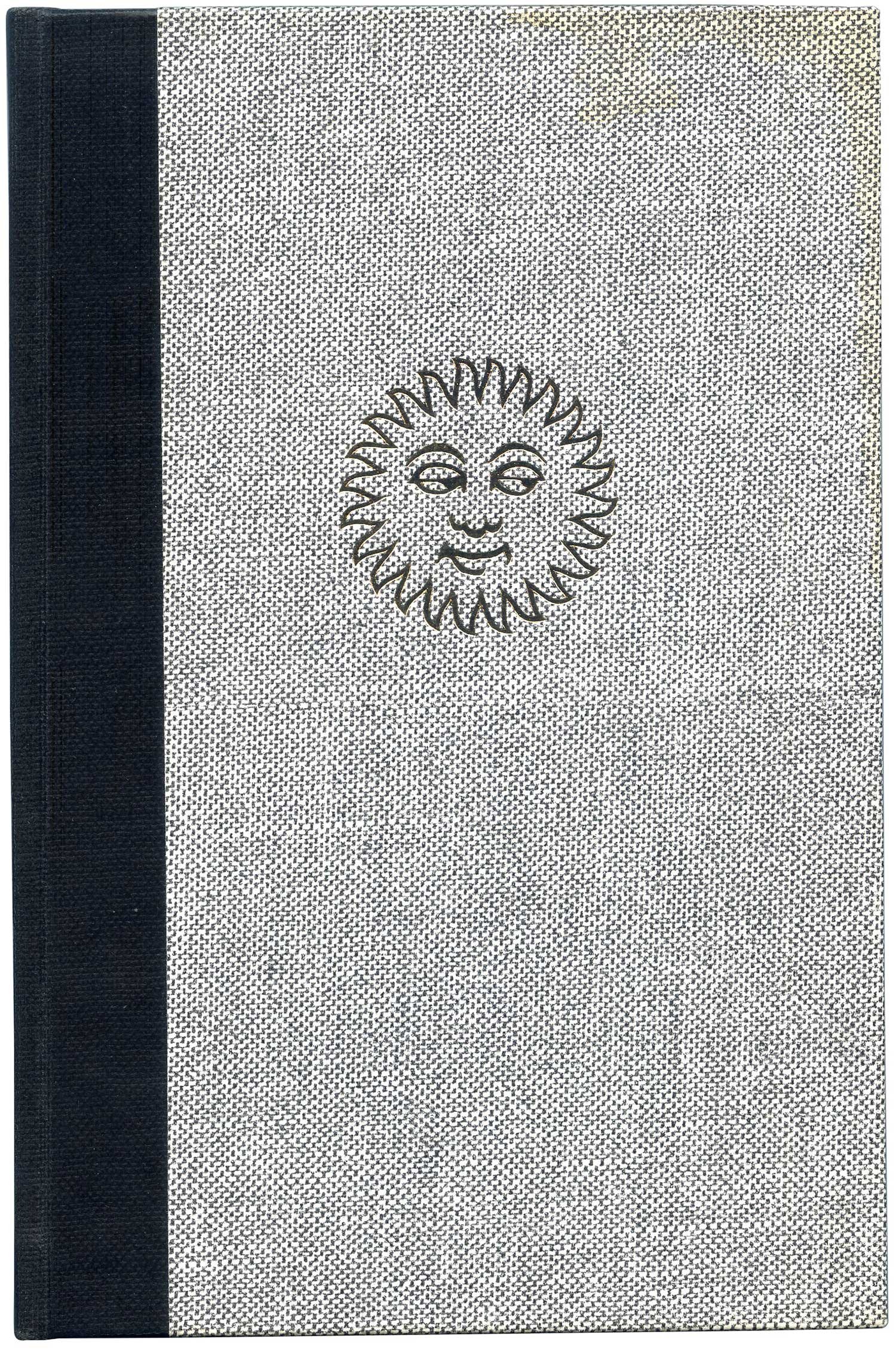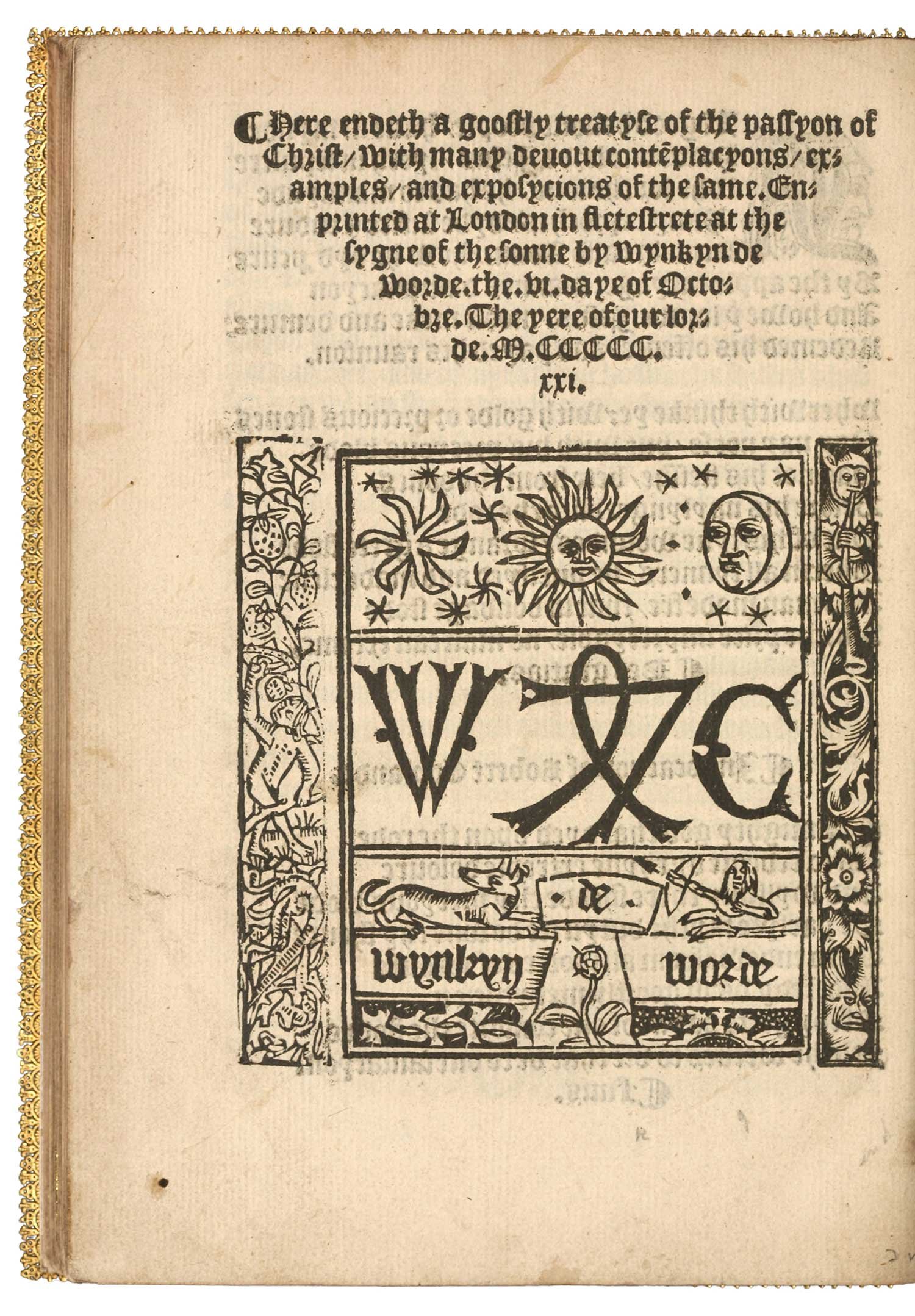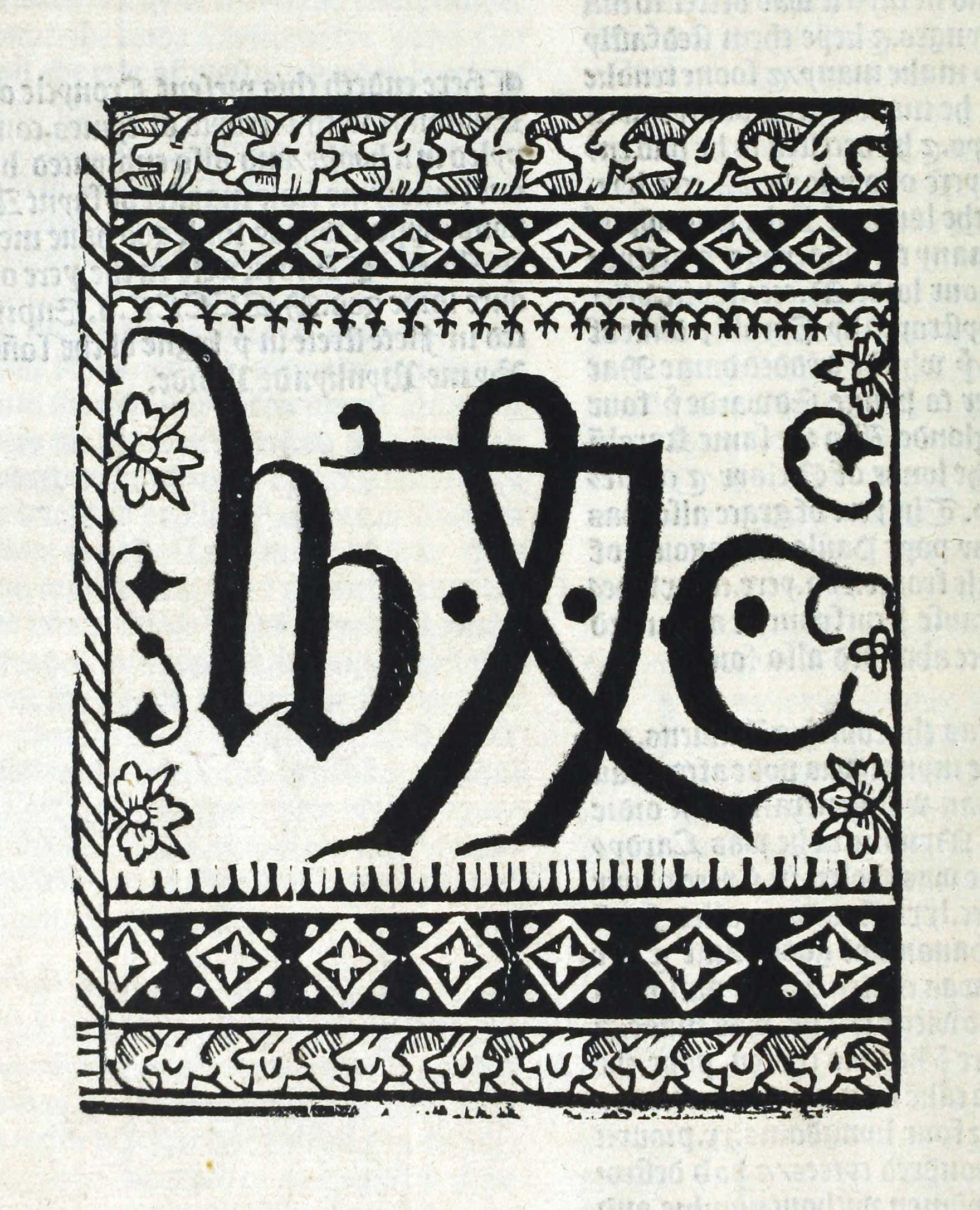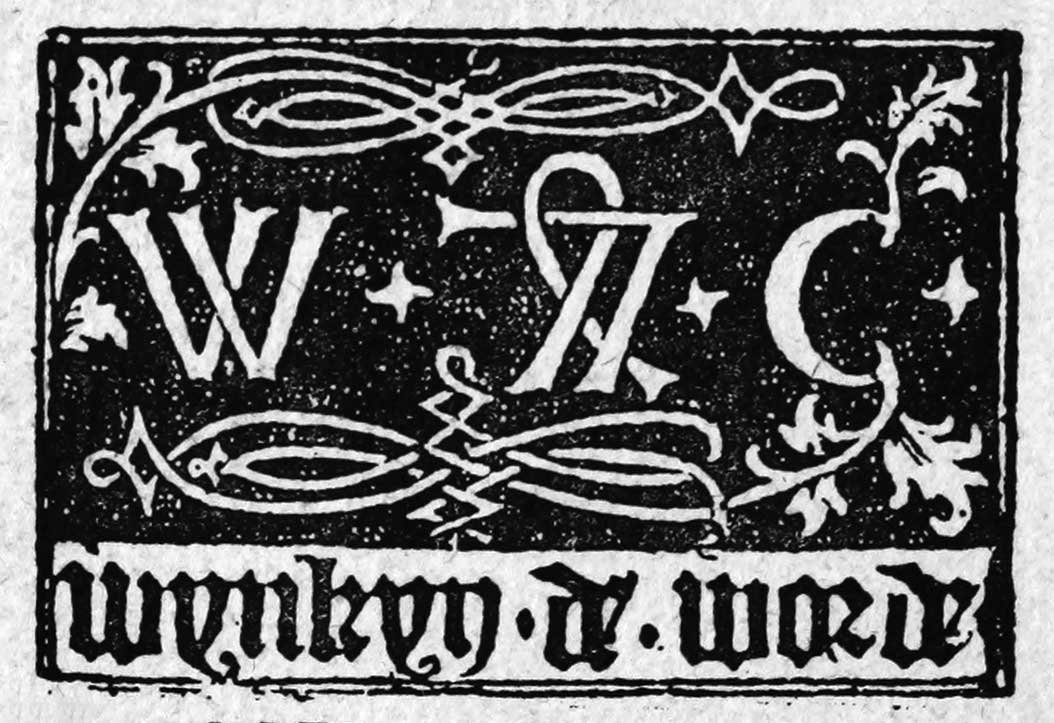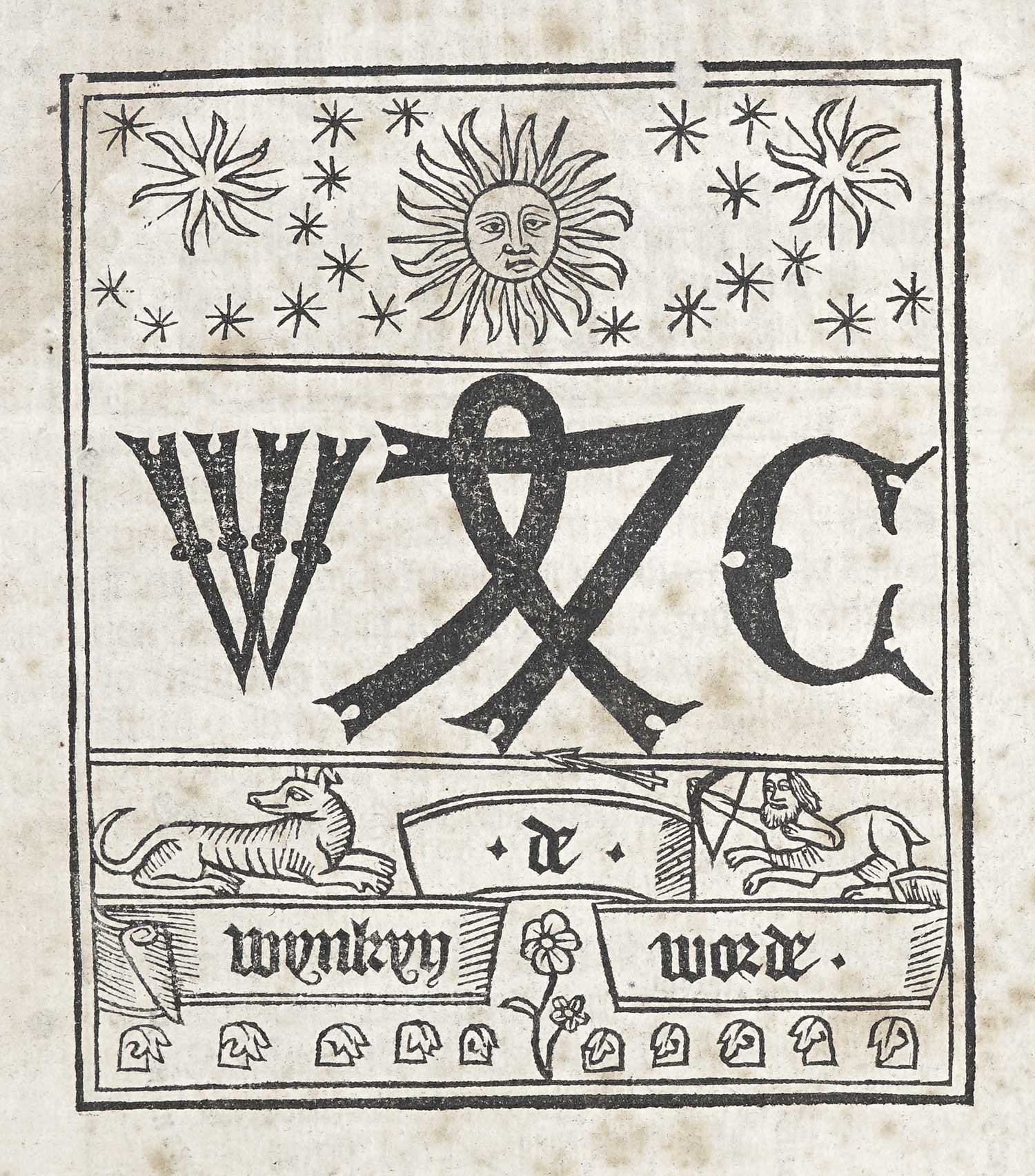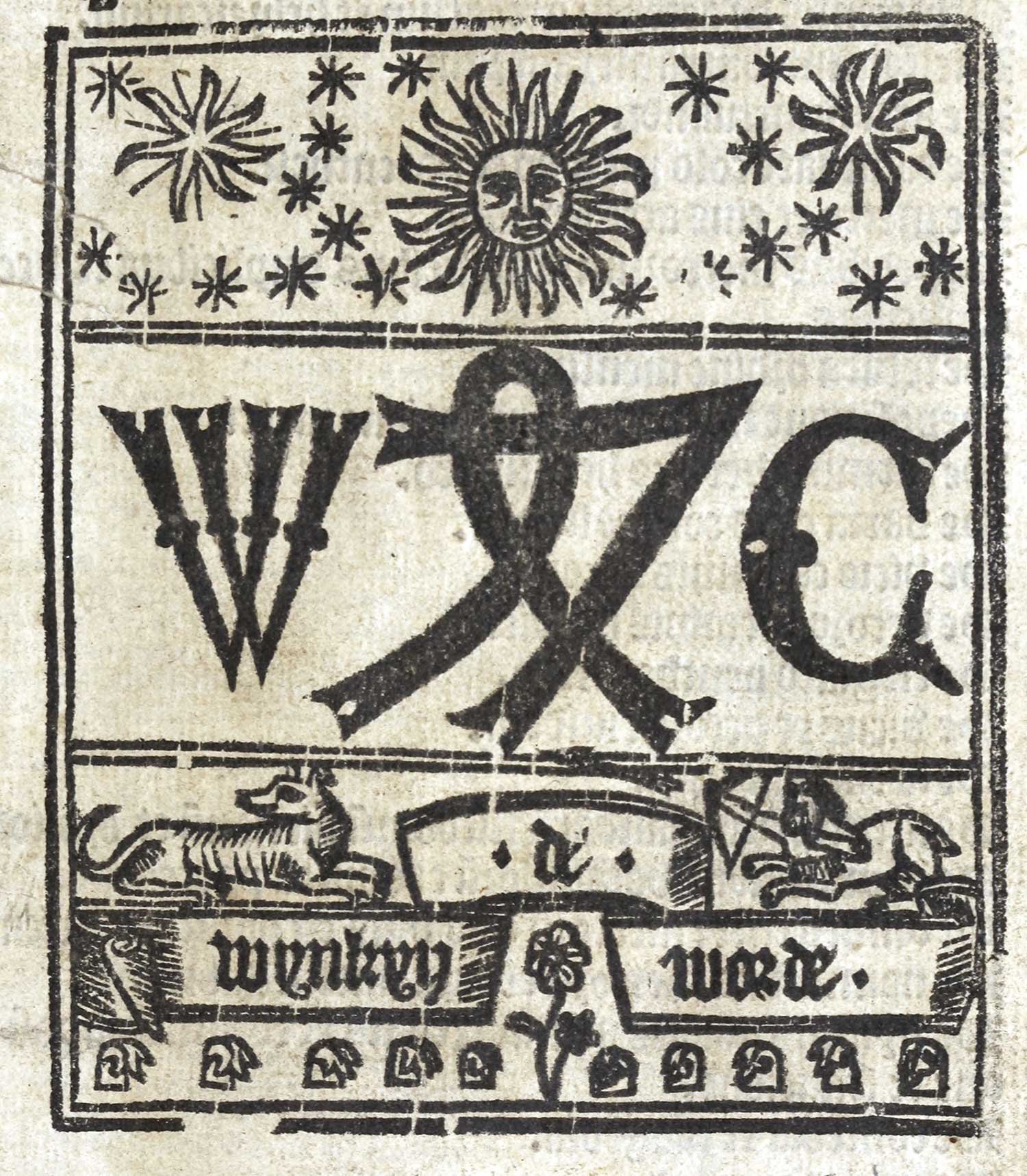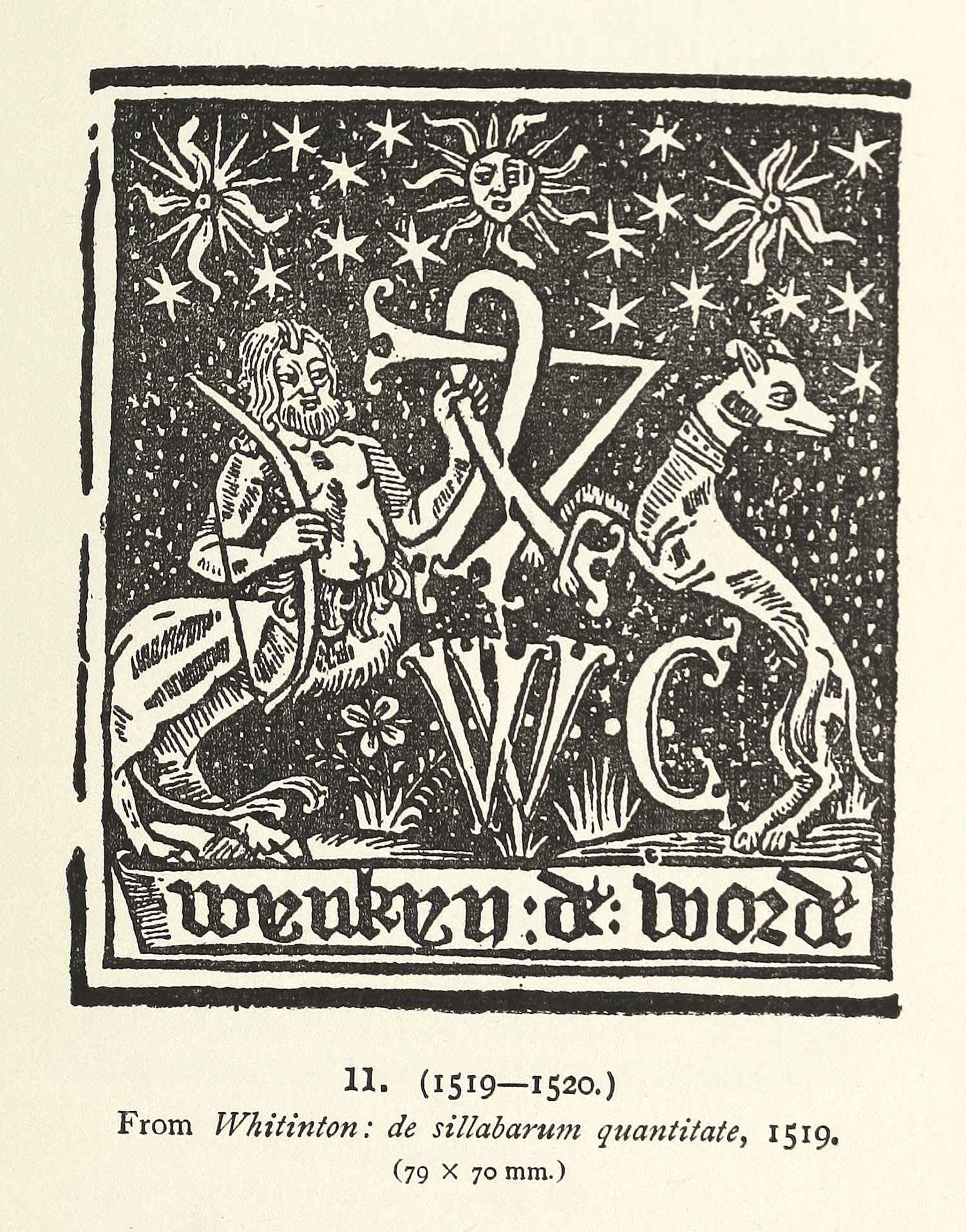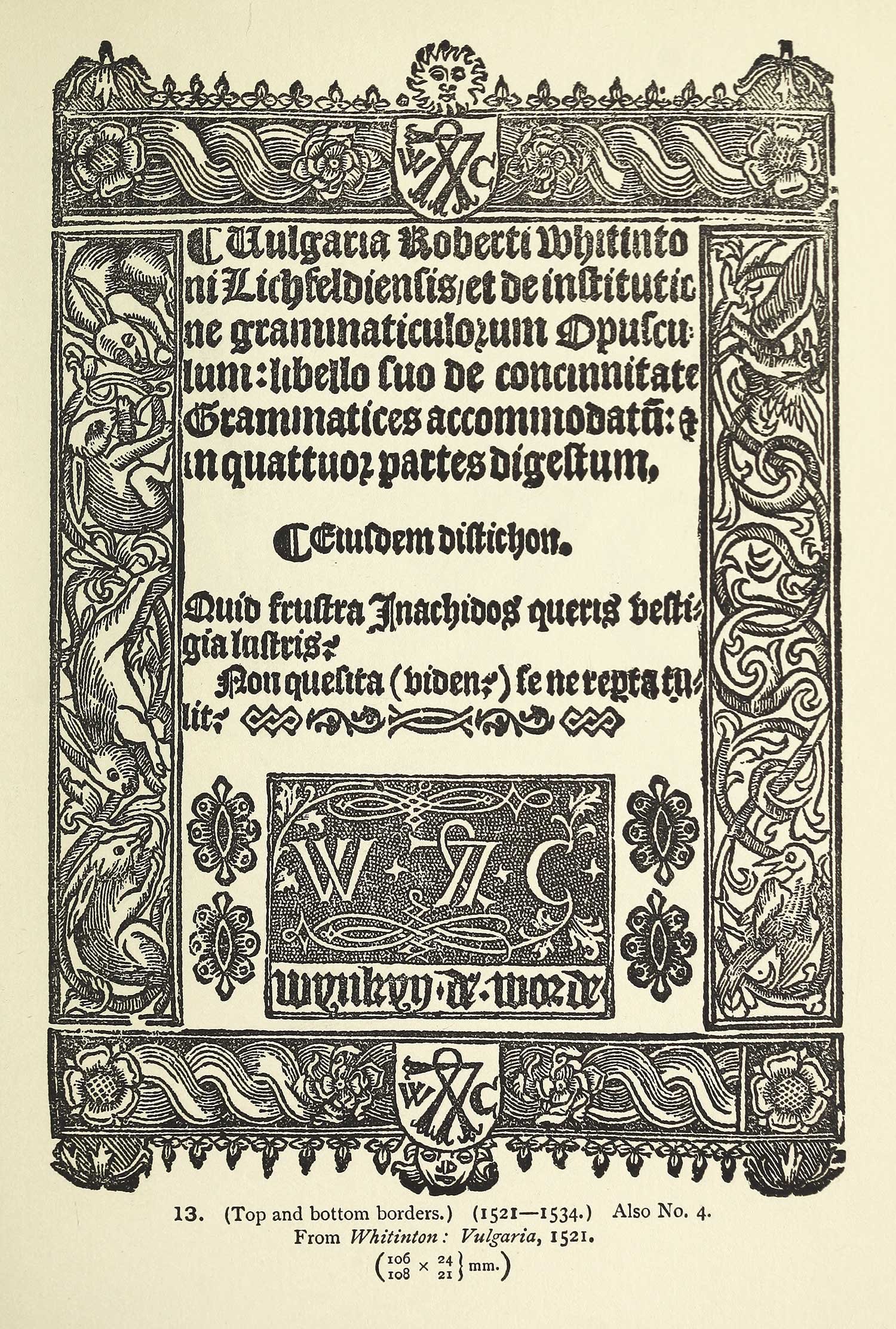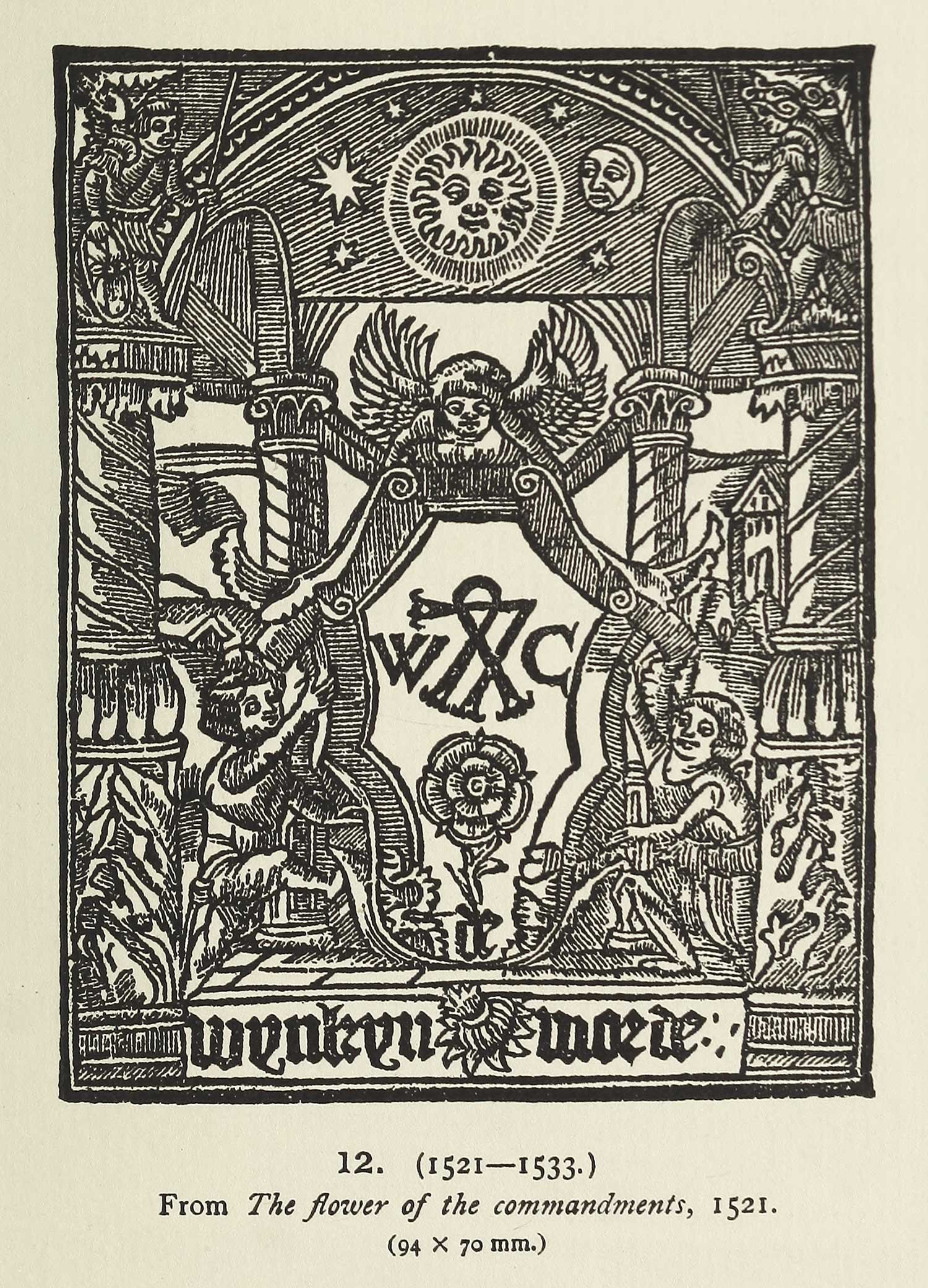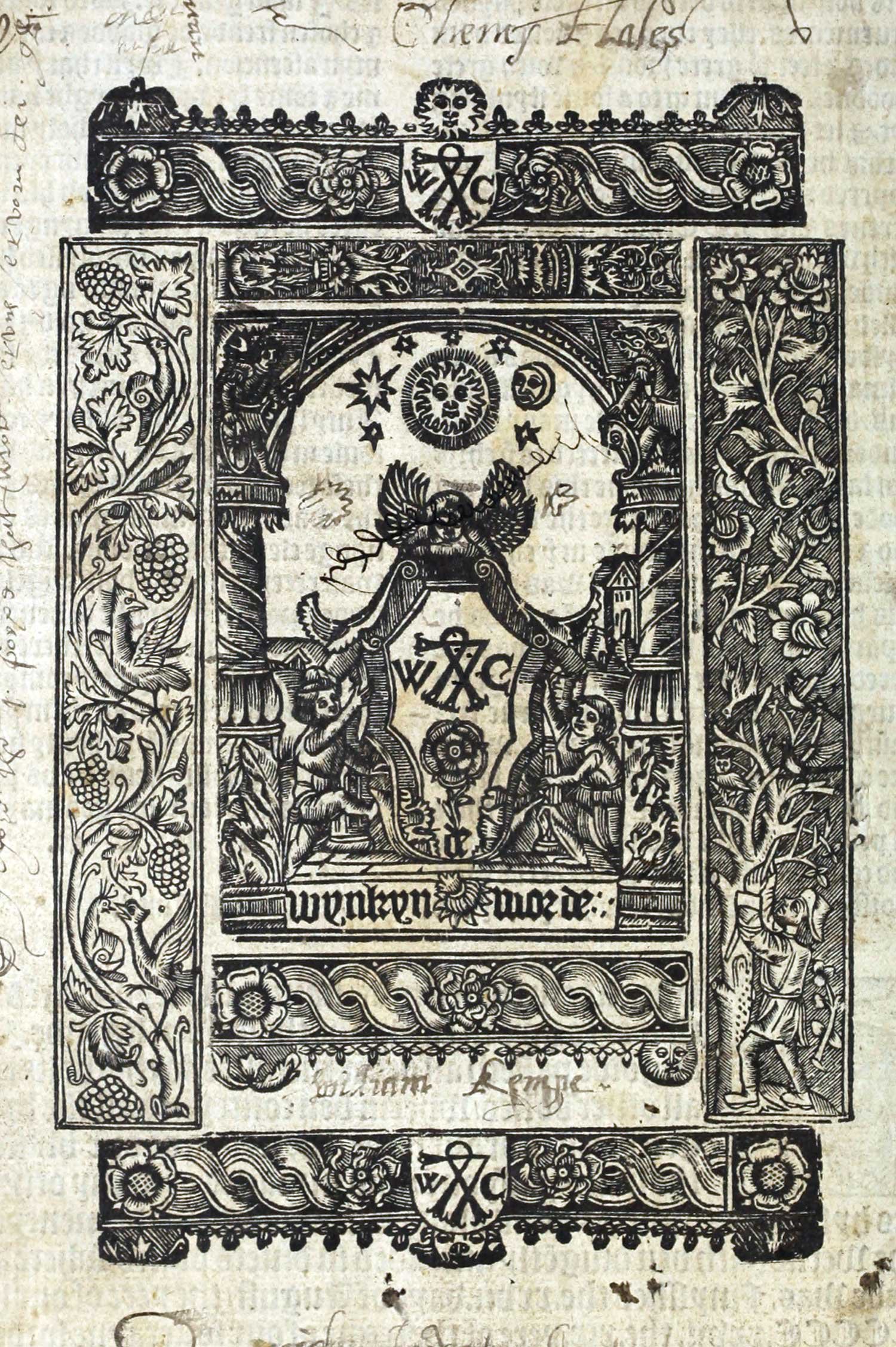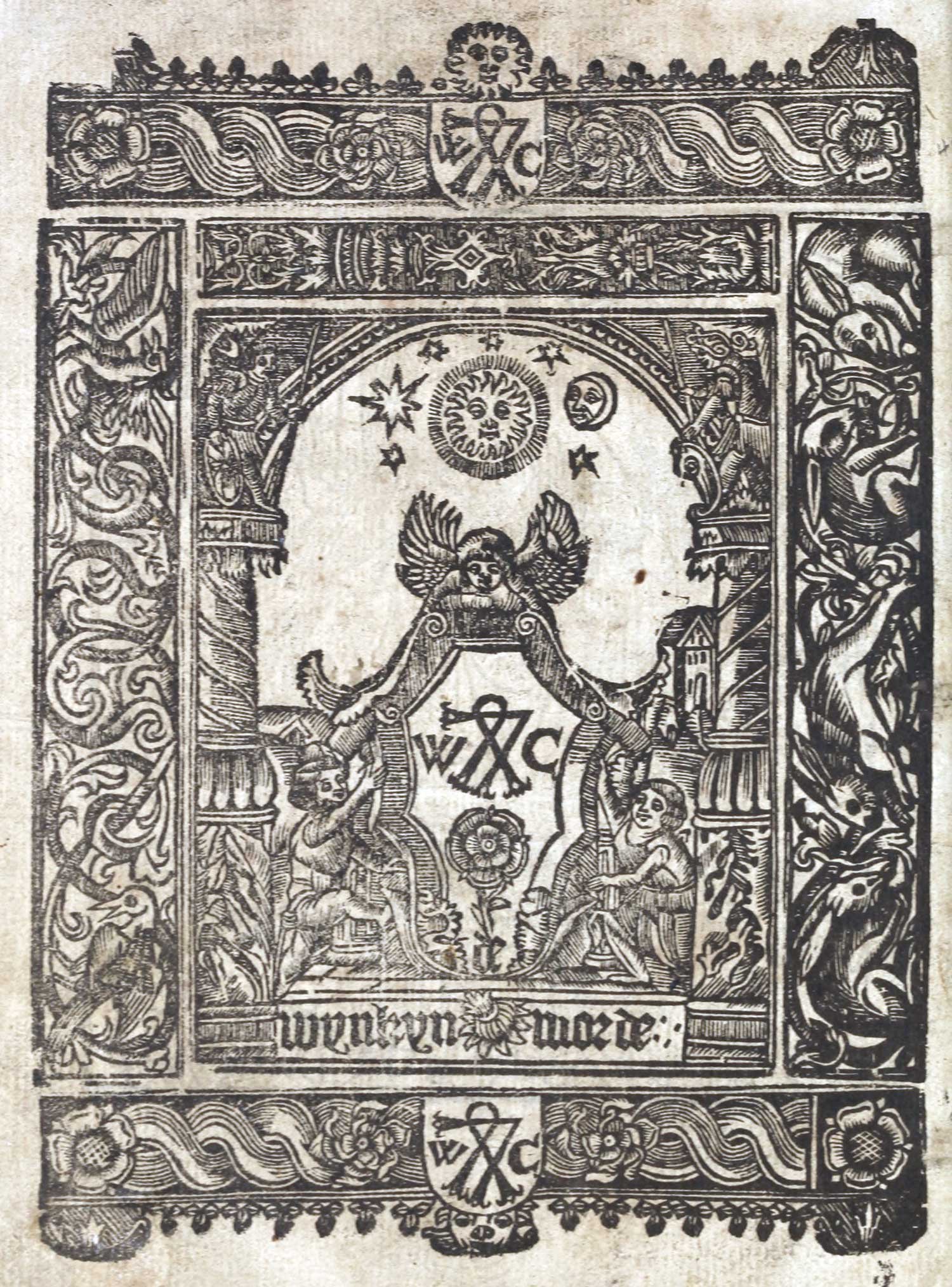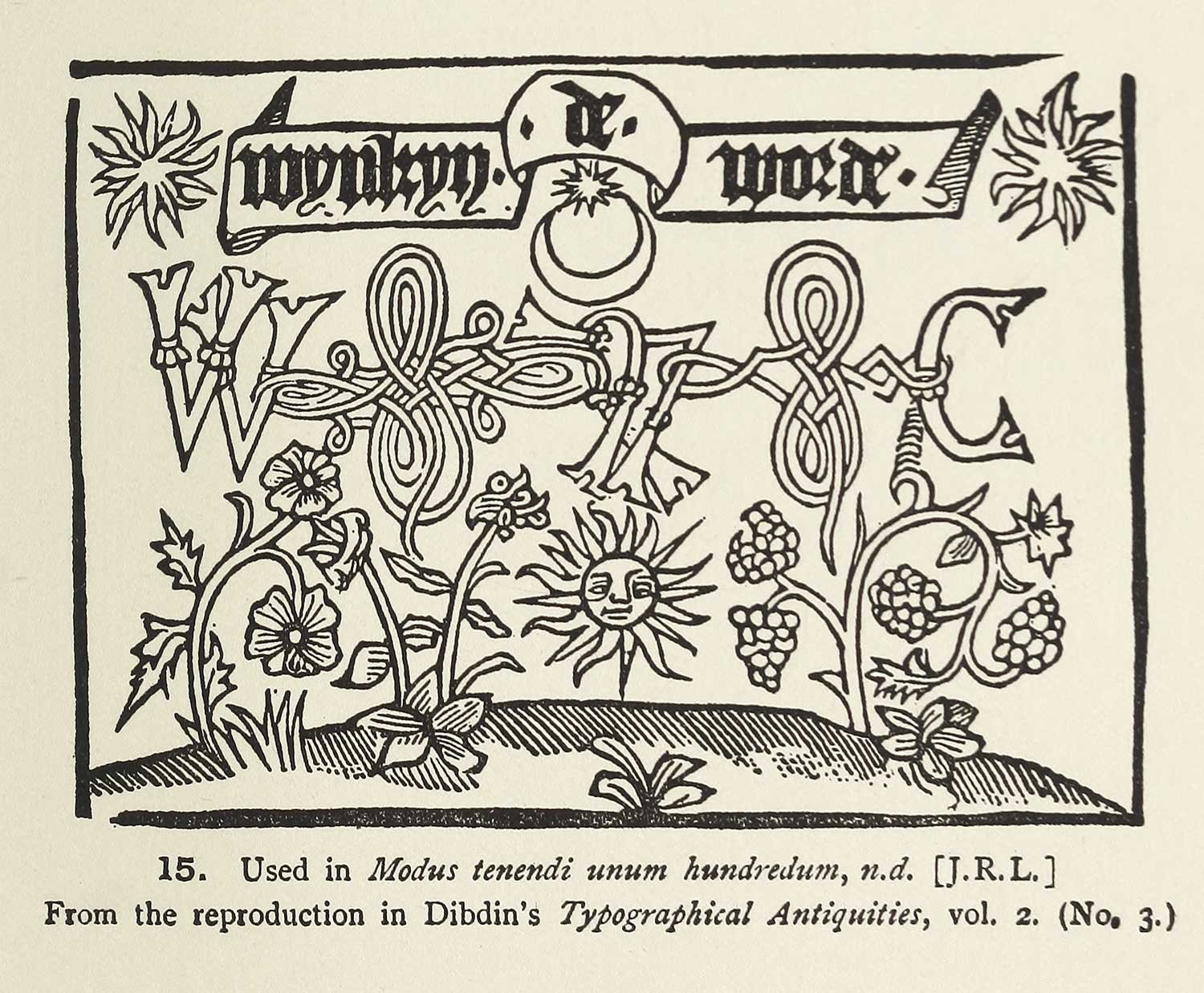The Sign of the Sun
Lately I’ve been thinking about the various beautiful sun illustrations that have represented the Society over the years. Here’s a selection of some of them from our Sign of the Sun page:
Quite the array! Here are a couple in use on publications from the very early days of the Society:
But what was the source of the illustrations?
De Worde famously worked at the Sign of the Sun – the trade sign that hung outside his shop on Fleet Street – as mentioned on this final page from The passyon of our lorde:
Here endeth a goodly treatyse of the passyon of Christ. With many devout conteplacyons, examples, and exposycions of the same. Enprinted at London in fletestrete at the sygne of the sonne by Wynkyn de Worde. The vi daye of Octobre. The yere of our lorde. M.CCCCC.xxi
Below the text on that page you can see one of de Worde’s printer’s devices. These devices were effectively the branding of the age, and could combine various elements – in this case the central block features William Caxton’s mark and initials; with a sun, stars and moon above; and de Worde’s name below, together with a dog and Saggitarius. Either side of the device has additional illustrated borders.
This is one of myriad devices that de Worde used during his career. Most featured Caxton’s mark and initials. The mark is a curious one – I haven’t found anything that convincingly explains what it represents.
Here’s another version, from Chronycle of Englonde, in an edition printed by de Worde, featuring a smaller S and C outside of the W and C.
Here’s an explanation from Printers’ Marks (1893) by W. Roberts:
So far as regards Caxton’s device, it is easier to name the books in which it appeared than to explain its exact meaning. The late William Blades accepts the common interpretation of “W. C. 74.” Some bibliographers argue that the date refers to the introduction of printing in England… In all probability the date, supposing it to be such, and assuming that it is an abbreviation of 1474, refers to some landmark in our printer’s career.
Professor J. P. A. Madden, in his “Lettres d’un Bibliophile,” expresses it as his opinion that the two small letters outside the “W. 74 C” are an abbreviation of the words “Sancta Colonia,” an indication that a notable event in the life of Caxton occurred in 1474 at Cologne.
Which all seems a tad… tenuous?
Anyway, here are some more of de Worde’s devices, in chronological order. (Mostly sourced from originals on archive.org, or from books about printers’ devices also available on there. Links are in the captions below each image.)
It’s fascinating to see how varied the illustrations of the sun are:
That final one, unfortunately undated, seems to be the source of the sun which we’ve been using as our default one recently, the one with the pleasingly wry smile:
Anyway, I’m sure some of our Honorary Designers know far more about this than I do. Drop me a line if you have any thoughts: alistair@wemadethis.co.uk.
– Alistair Hall | 15 March 2024

